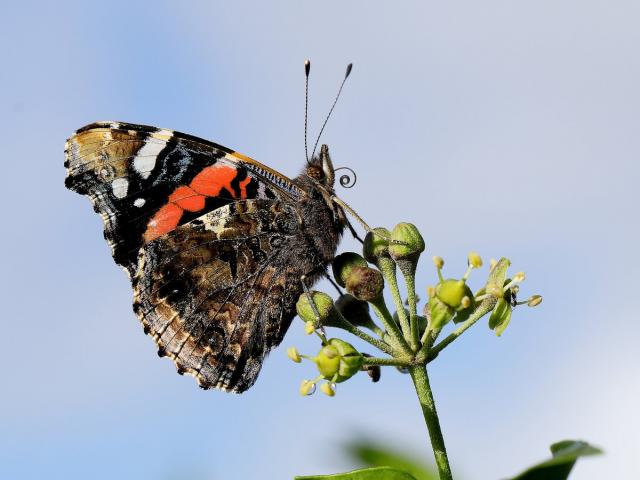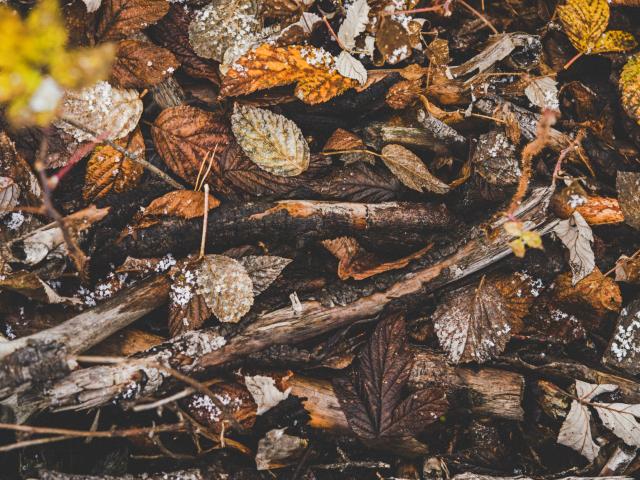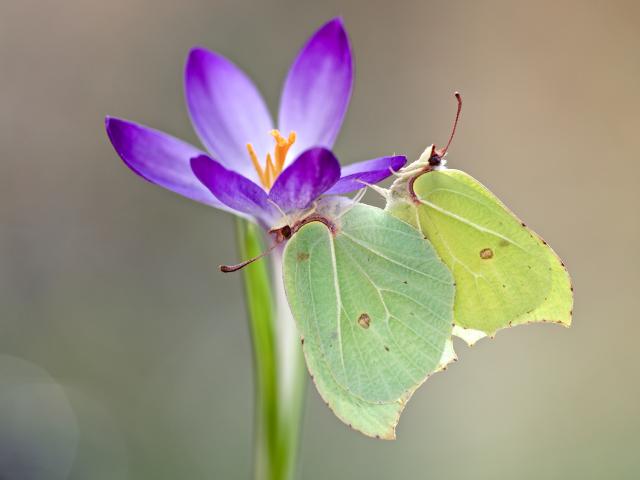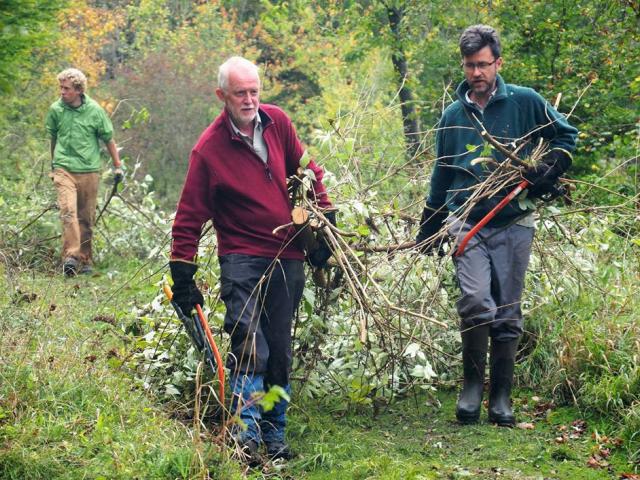Find out how you can help wildlife in your garden this autumn.
-
Make a banquet for butterflies.
Red Admiral adults are often abundant during the autumn months and a frequent visitor to gardens if the weather is mild as they feed to build up reserves before the arrival of winter. They will feed on fallen fruit such as berries and apples, as will Comma butterflies and maybe even Speckled Woods, so don’t clear up all your windfalls just yet. If you don't have any fallen fruit, put out some of your own, mushy bananas and soft mangos are favourites. If the fruit is fermenting you might even witness a tipsy butterfly!
If you've eaten all your fruit, you can buy your own Butterfly Nectar from our shop.
-

Keep counting.
With autumn well underway, the nights drawing in and the days getting shorter, you'd be forgiven for thinking the time for spotting butterflies has long past but there are still butterflies and moths on the wing. In mild years, it is possible to see up to 12 species of butterfly in November, including Red Admiral, Comma, Speckled Wood and perhaps even the odd Holly Blue!
Log the butterflies you see using our free iRecord app or start recording moths through the National Moth Recording Scheme.
-

Importance of Ivy.
Ivy can be a lifeline for autumn moths, butterflies and other pollinators as it flowers late in the year when other nectar sources are unavailable. Many different autumnal moths are regularly seen refuelling on ivy blossom, including the beautiful Pink-barred Sallow and Angle Shades. The camouflaged caterpillars of the Holly Blue butterfly feed on the developing flower buds of Ivy so trimming back too early could mean disaster for this familiar garden favourite.
Discover the importance of Ivy.
-

Benefits of Buddleia.
Discover the benefits of buddleia.
Buddleia is a great nectar source for garden butterflies during the summer but they can be encouraged to flower well into October in mild years. Deadhead to prolong flowering period and then cut back to prevent the seeds spreading. Remember, Buddleia can be invasive on disturbed ground and within the wider wildlife habitat - keep it in your garden!
-

Build a bug hotel.
Build a home for insects this autumn
Shelter can sometimes be hard for wildlife to find in gardens but making one for them is easy, what better use for all your garden waste and odds and ends than to provide a home for bugs and other creatures? Create the perfect hideout and your bug hotel could attract anything from hedgehogs to toads, ladybirds to woodlice and even bumblebees or butterflies.
-

Plant bulbs for pollinators.
Prepare for spring with these helpful tips from our Secret Gardener
Now is the time to plant bulbs to provide spring colour and a valuable nectar and pollen source for pollinators emerging from their winter hibernation. Plants such as Snowdrops. Crocuses and English bluebells are all excellent choices and favourites among the first spring butterflies such as Brimstone and Orange-tip.
-

Plant a tree.
Pick a tree to plant.
Autumn is also a good time to plant trees and hedges. Hawthorn, Blackthorn and Holly can be planted singly or to create a dense hedge, providing further food and shelter for wildlife. Common Hawthorn Crataegus monogyna has fragrant white flowers from late spring to early summer and then a bounty of red berries in the autumn for the birds.
-

Collect seeds to sow.
Find out the best time to sow.
Seed harvesting is a cost-effective way of preserving and increasing your stock of plants. Any surplus can be shared or swapped with friends or family. Exchange different seeds to grow plants that will attract different types of butterflies and moths to your garden and create a colourful display for the following summer.
-

Let the nettles be.
Leave a patch of nettles this autumn.
Stinging nettles are vital to some of our most well-known butterflies, including the struggling Small Tortoiseshell so allowing a patch to grow in a sunny corner of your garden can make a big difference. Nettles don’t need to be trimmed in the autumn as they will die back over the winter and there may still be some caterpillar activity, also Red Admiral chrysalises may still be found at the top of the nettle, within a feeding shelter made by the caterpillar.
-

Volunteer and take part in a conservation work party.
See our events page to find a work party near you
Butterfly Conservation relies on the support of thousands of volunteers who contribute an estimated 175,000 days of time per year which is the same as 800 full-time staff. Our Branch volunteers run over 500 conservation work parties a year, over 1000 guided walks and talks and help to manage conservation work on over 30 reserves (1,960 acres of land), including major habitat restoration projects. Without volunteers, we could not do our work. Whether it be getting hands-on with conservation work or recording the butterflies and moths, there is a wide range of opportunities for people who would like to get involved, whatever their age or experience.
Andrew Cooper
Follow Andrew on twitter - @AndrewCooperBC


